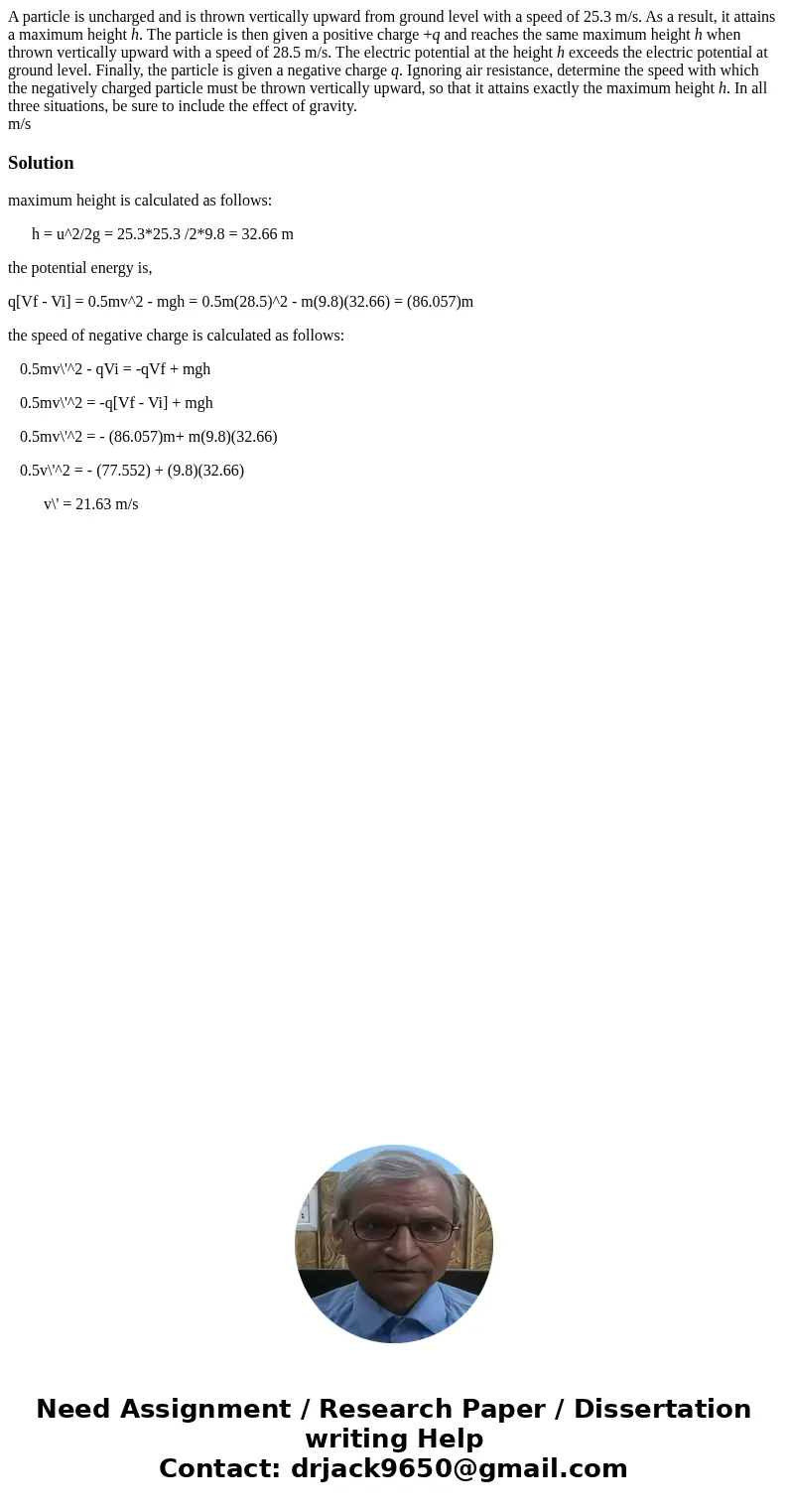A particle is uncharged and is thrown vertically upward from
A particle is uncharged and is thrown vertically upward from ground level with a speed of 25.3 m/s. As a result, it attains a maximum height h. The particle is then given a positive charge +q and reaches the same maximum height h when thrown vertically upward with a speed of 28.5 m/s. The electric potential at the height h exceeds the electric potential at ground level. Finally, the particle is given a negative charge q. Ignoring air resistance, determine the speed with which the negatively charged particle must be thrown vertically upward, so that it attains exactly the maximum height h. In all three situations, be sure to include the effect of gravity.
m/s
Solution
maximum height is calculated as follows:
h = u^2/2g = 25.3*25.3 /2*9.8 = 32.66 m
the potential energy is,
q[Vf - Vi] = 0.5mv^2 - mgh = 0.5m(28.5)^2 - m(9.8)(32.66) = (86.057)m
the speed of negative charge is calculated as follows:
0.5mv\'^2 - qVi = -qVf + mgh
0.5mv\'^2 = -q[Vf - Vi] + mgh
0.5mv\'^2 = - (86.057)m+ m(9.8)(32.66)
0.5v\'^2 = - (77.552) + (9.8)(32.66)
v\' = 21.63 m/s

 Homework Sourse
Homework Sourse